The Five Best Non-Destructive Moisture Meters for Building Inspections

There's lots of technology available that’s specially designed to make the lives’ of builders and building inspectors a whole lot easier. Perfect examples of such equipment are non-destructive moisture meters. They’re designed to capture moisture measurements quickly and over large areas, without creating a time-consuming post-test clean-up.
This article explains what non-destructive moisture meters are and how they work. As a bonus, Instrument Choice scientists thought you might like a peek at the five best non-destructive moisture meters available now.
About Non-Destructive Moisture Meters
A non-destructive moisture meter is a nifty device used to undertake moisture detection investigations, whether on wood, drywall, plaster or brick. Easy to use they also are a useful tool when performing building inspections or investigations over large areas.
How Non-Destructive Moisture Meters work
Non-destructive moisture meters work by transmitting low-frequency signals into the building material you wish to test. Depending on the amount of moisture present, the transmitted signal will have differing levels of impedance (i.e., the effective resistance of an electric circuit or component to alternating current, arising from the combined effects of ohmic resistance and reactance). The device will measure impedance and produce a metric expressed as a moisture percentage.
The benefits of Non-Destructive Moisture Meters work
No pin marks: Most non-destructive moisture meters can penetrate materials to a reasonable signal depth – some up to 300mm. The advantage is, unlike other types of moisture meters, you won’t leave unsightly pin marks. A common application is detecting moisture in existing structures behind materials such as walling.
Measure large areas quickly: Another benefit of non-destructive moisture meters is you can scan large areas by running your meter across a surface. If you’re a building inspector or need to know the moisture profile of a particular area scanning large areas, a non-destructive moisture meter makes moisture mapping easy. It is as simple as drawing an area of a room then overlaying the measured moisture levels. See the example below.
Using Non-Destructive Moisture Meters for Moisture Mapping
Moisture mapping after performing a building inspection helps determine the speed of change in moisture patterns, and any map improvement after rectifying a building fault.
The moisture map example (furthest below) shows a visible moisture stain in the orange areas, along with corresponding moisture level percentages. The bottom moisture map is a baseline measurement soon after flooding. The upper map depicts 20 hours after the flooding. You can see how the areas of high moisture have reduced, and the saturation levels fall.
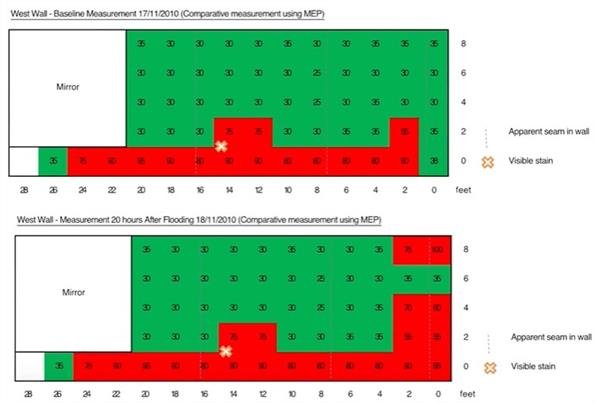
Figure 1 Moisture Map of an area showing a baseline measurement(top) and a measurement 20 hours after (bottom).
Five Examples of Non-Destructive Moisture Meters
The Instrument Choice Scientists have selected 5 of the best non-destructive moisture meters for building inspections. Use any of the examples below to create moisture maps to take your building inspections and data collection to the next level.
1.Moisture Encounter Plus Meter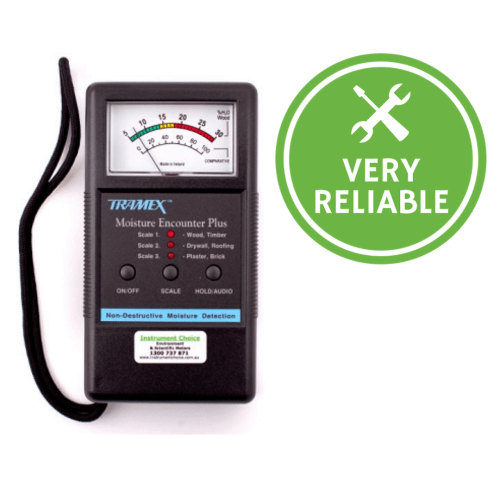
The IC-MEP is currently the best selling non-destructive moisture meter in the Instrument Choice online store.
The device uses three ranges of sensitivity and a deep penetration signal to provide moisture readings and evaluations without damaging the material you wish to test.
Tramex has a moisture mapping app to help you present your results visually. See how to create a moisture map using the MEP here.
Signal Penetration: Up to 30mm
2. T660 Material Moisture Measuring Device 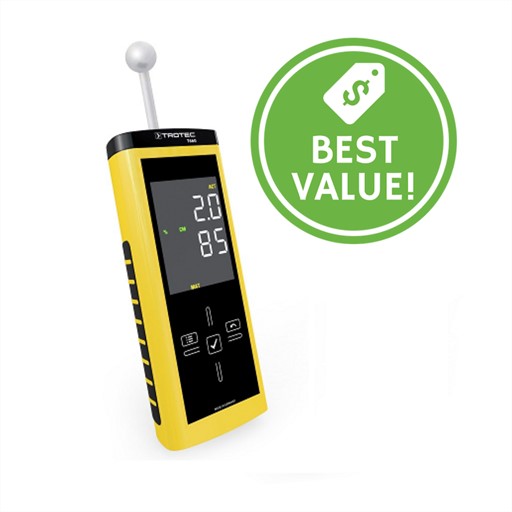
The T660 is a professional hand-held measuring device for a quick, non-destructive measurement of moisture distributions in near-surface areas.
The stand-out feature is a bright, high-resolution colour display that makes viewing results and recalling minimum, maximum and average measurements incredibly easy.
Signal Penetration: Up to 40mm
3. MRH3 - Digital Non-Destructive Moisture Meter 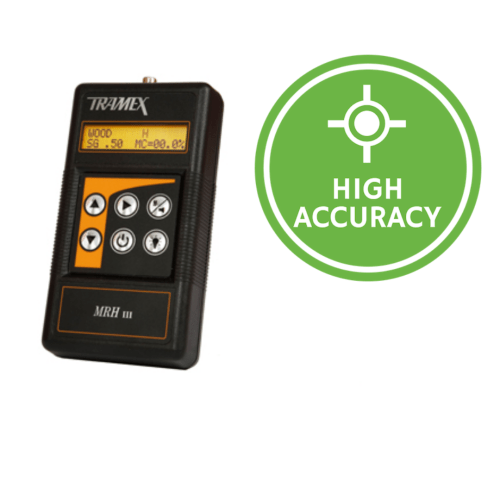
The Tramex MRH III Moisture and Humidity Meter is a precision hand-held digital moisture meter calibrated for most building materials.
The MRH3 has a clear, backlit LCD for easy-to-read results. A plug-in wood and relative humidity probe is an optional add-on feature.
Signal Penetration: 25mm
4. Moisture Meter For Wood & Material With Calibration Protocol 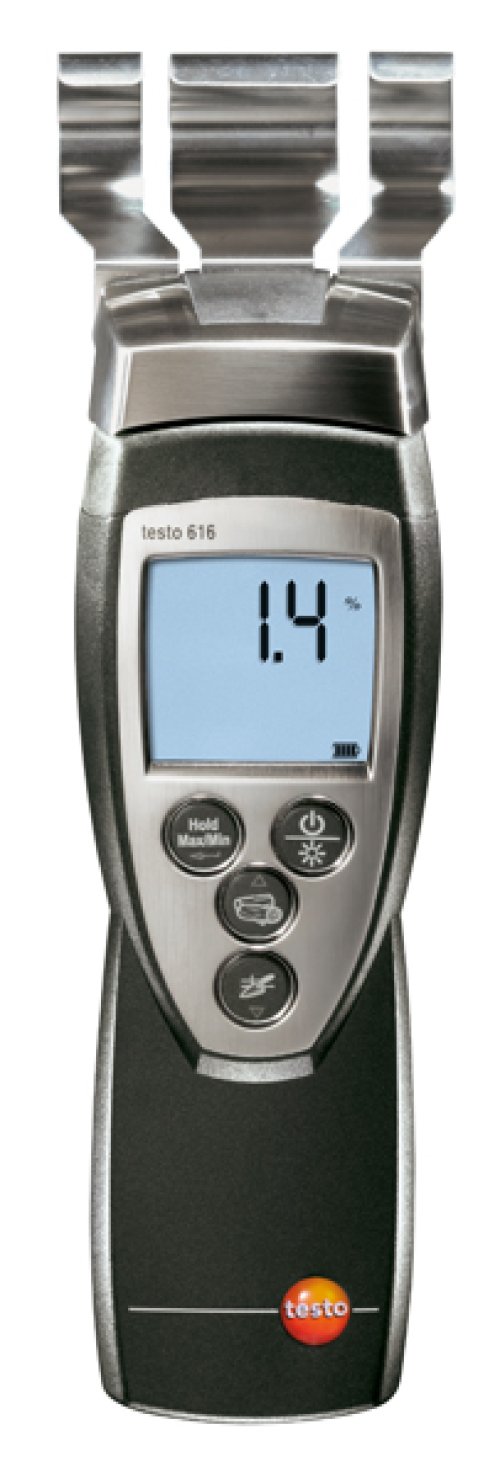
This material moisture meter provides a precise and non-destructive means of measuring the moisture content of wood and building materials or monitoring the drying process after water damage.
Operate by placing the meter’s measuring claw against the surface of the material you would like to measure. It’s that simple! The meter shows you the moisture content as a weight percentage compared to the dry weight.
Signal Penetration: Up to 50mm
5. Trotec T610 - Material Moisture Meter 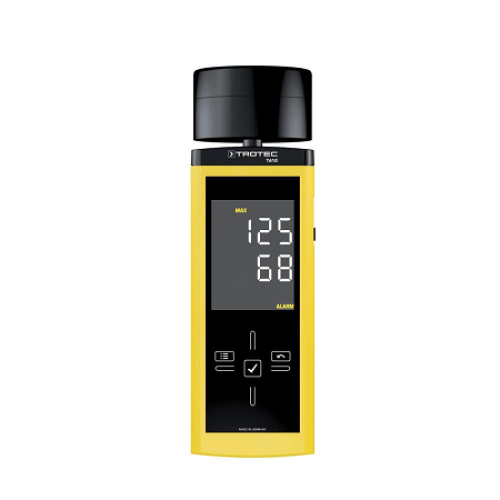
The T610 is a professional hand-held instrument designed for quick, non-destructive deep sub-surface measurements.
This moisture meter boasts a huge measurement depth of up to 30cm.
The device sounds an audible warning ant time you exceed a pre-set moisture limit during a test. The need to refer to the visual display during measurements is therefore removed – making measuring large floor or wall spaces a breeze!
Signal Penetration: 300mm
Non-destructive moisture meters take the risk, guesswork, and mess out of making moisture measurements of materials. Perfect for use in building inspections, the devices can easily cover large areas to help create moisture maps.
Have some questions about non-destructive moisture meters? Want to know more about moisture mapping? Contact us! The Instrument Choice Scientists are guns and are eager to answer your questions. Call 1300 737 871 or email [email protected]
Also interesting
Regular maintenance of weather stations is the key to ensuring accurate results while also prolonging the life of your station. If performed at regular intervals, performing maintenance will be a relatively easy task. Here is a checklist we have created and tested to ensure your weather station is adequately maintained and your measurements are precise.

The pH of food and beverage can have a significant impact on the quality and safety of food. Read on to learn more about why you should measure the pH of food, and how you can ensure the electrode of your pH tester is best suited to your food measuring application!

